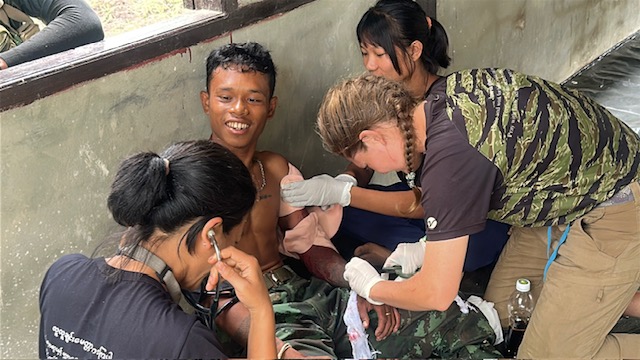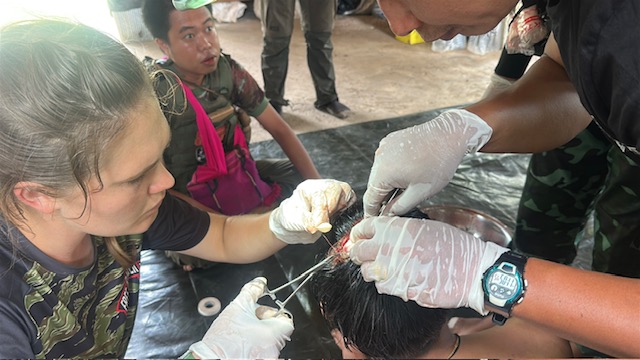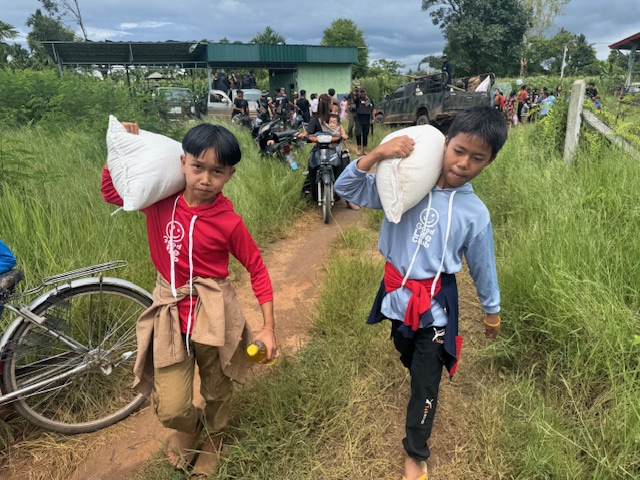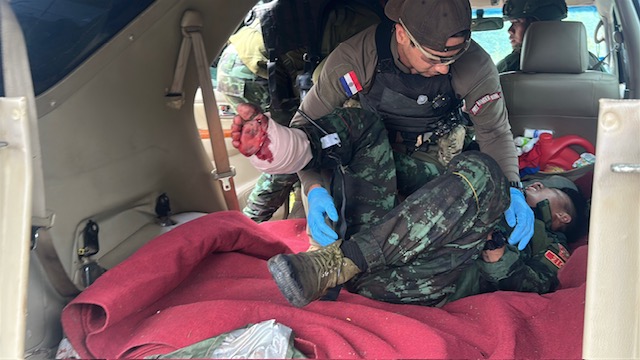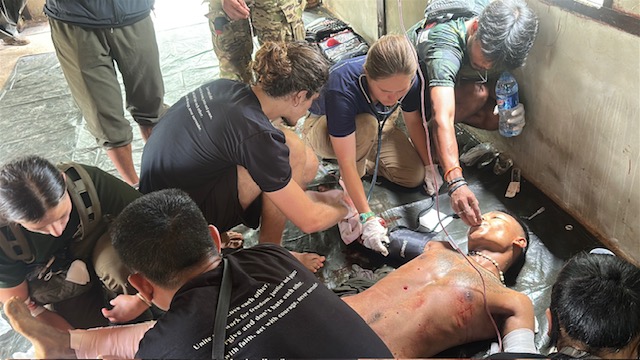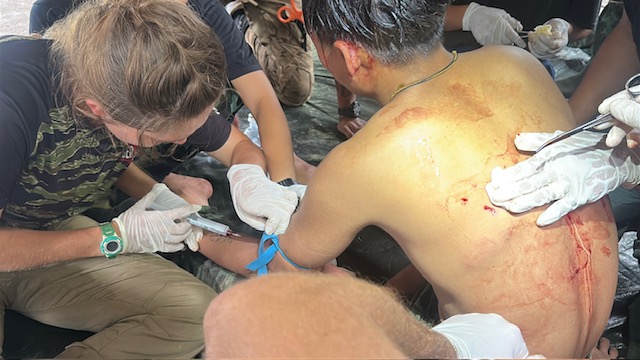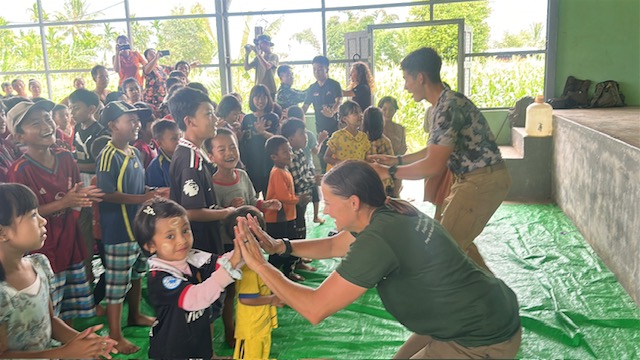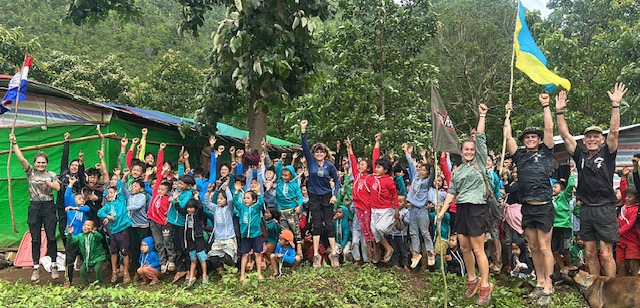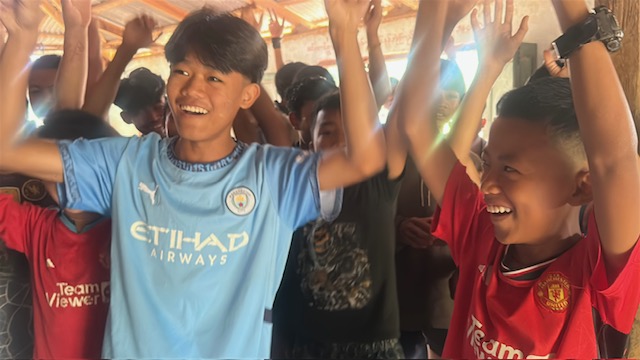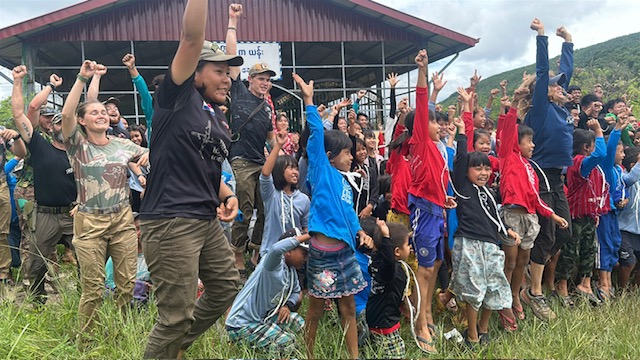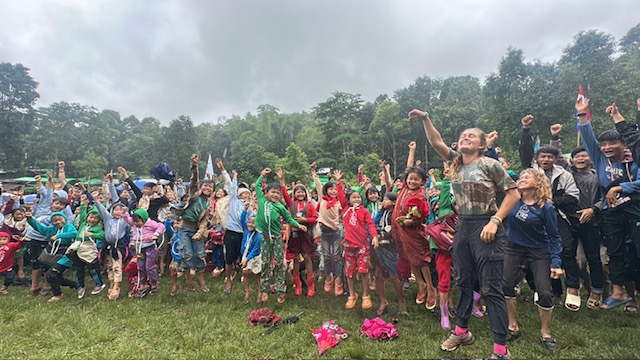1 July 2025
Karenni State, Burma
“Help us, Lord Jesus,“ was our constant prayer throughout the Moebye battle. Mortars and 105mm howitzer were fired repeatedly at our casualty collection point (CCP). The speed between the crack of the cannon being fired and the boom of impact allowed us no warning. Unlike with a mortar, when you can sometimes hear it being fired and then have a few seconds before impact, the firing and impact of a howitzer is almost simultaneous, and it’s devastating in its power. We could do nothing but pray and get as low as we could. We set up our CCP in a concrete building and got down whenever the rounds came in, shrapnel slamming into our building, but we were protected. We thanked God throughout the day.
Moebye rests on the edge of the mountains with a gentle sloping plain of rice fields to the east. North of town is Pekon Lake . Next to Moebye flows the peaceful and beautiful Balu River. But there’s no peace now. The Burma military has hammered Moebye for four years, with multiple massacres of villagers before everyone fled. Moebye sits at a strategic crossroads between southern Shan State and northern Karenni State, Burma. It is a crucial lifeline and supply line for the people in these regions. Just south of Moebye almost the entire population of 350,000 Karenni have been displaced with thousands of southern Shan families displaced in this area as well.
The first week we arrived, over 12,000 people were displaced in one day by Burma military attacks just northeast of Moebye. Our team went to provide medical support at a CCP, as well as carry wounded off the front lines. Normally, that means running through gunfire, dragging the patient back to a road if there is a road, and then transferring the wounded into a vehicle. Roads near the front lines are usually heavily targeted by mortars and airstrikes because the Burma military knows they are evacuation routes for the wounded. We were blessed this time in this battle to have one armored vehicle which we purchased last year. It’s the only armored vehicle we have in Burma and it’s been hit multiple times by mortar as well as rifle and machine gun fire. Each time it has been hit, the armor has protected the wounded and medics inside.
To provide medical care we divided into three elements. One was with the armed vehicle in the front, going to pick up casualties at the point of injury. We would dismount and move on foot to bring the wounded back to the vehicle. The armored vehicle then moves back to a transfer point where we have other vehicles with medics. The transfer team continues to work on the casualty, drives them back to CCP and our team of nurses, medics and one doctor, who try to stabilize them. Once they are stable at the CCP, they’re then transferred for further care to whatever hospital is closest, which is often a day’s drive away.
This battle went on for five days and there was a total of 58 wounded and seven killed. But the resistance was able to hold the Burma Army back from the crossroads. During two different lulls in the fighting, part of our team went back to where the IDPs were and did Good Life Club programs for displaced families, especially children. What an incongruence, to be singing and dancing while hearing the sound of mortars landing; yet, we were filled with genuine joy to be together and to be alive.
One of the most moving moments was when we were asked to do a program inside a monastery so that planes couldn’t see us. There was a giant Buddha image in the main hall where we set up. The displaced people, many of them Buddhist, knew most of us were Christians, but welcomed us warmly. Karen and the team started off with songs and laughing and clapping together. They talked about the saving power of Jesus and led everyone in the song, “Our God is a great, great God.” I could feel God‘s presence of love and power there as I looked at the smiling faces of the crowd, which was a mix of Buddhist, Christian, and animist, and now was united by love.
Someone asked me the other day, “Do you have to be a Christian to be a Ranger?” The answer is no, you only have to agree to do this for love. We have people from many different religions that are part of our teams. Many of us share about Jesus, because he changes our hearts and we want all to experience His love. At the same time, we welcome anyone who wants to act in love and help their people. The only rules we have are: 1) You have to love each other and forgive each other. 2) You have to be able to read and write in any language to do quality medicine and make reports. 3) You can’t run away if the people can’t run away.
During the Good Life Club program, we did a skit on the armor of God and how to overcome the work of the devil with Jesus as our helper and Savior. The rain began to come down at the end of the program and the villagers, displaced people, and our teams begin to spontaneously dance together out in the rain. Sahale cranked up some country tunes, and it was pure joy!

